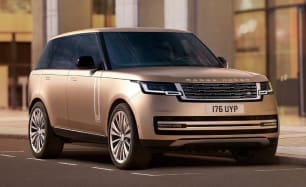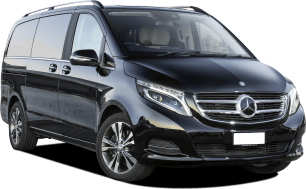There are two V-Class models you can buy; this newly added V220d variant, at $74,990, or the high-spec V250d Avantgarde, which is listed at $87,200.
That’s a pretty huge difference, especially considering you get plenty of equipment in the lower-spec version. To get a better understanding, let’s list off what’s standard, and what you get if you fork out the extra $12,210 for the top model.
The V220d has a 7.0-inch media screen with Garmin maps, dual USB ports, Bluetooth phone and audio streaming, auto headlights and wipers, DAB+ digital radio, CD, auxiliary and SD input, electric parking brake, electric front-seat adjustment with memory settings, cruise control, colour driver information screen with digital speedometer, black leather trim and sports pedals.
There’s three-zone climate control and velour floor mats up front, too, while parking moves are made easy with the brand’s Active Parking Assist system, which can semi-autonomously park the van for you. Other niceties include front and rear parking sensors, a reversing camera, dark tinted rear glass, heated/folding/auto-dimming side mirrors, and electric side doors and tailgate (with opening glass section).
Stepping up to the V250d sees the addition of a 15-speaker Burmester sound system, ambient lighting (three colours), a higher-resolution 8.0-inch media screen with integrated Wi-Fi hotspot and online access and navigation with live traffic updates, a 360-degree surround-view camera, adaptive cruise control, illuminated door sills in stainless steel, a rear parcel shelf, 18-inch alloy wheels, anodised roof rails, a body kit, chrome exterior trimming, LED adaptive headlights with automated high-beam and LED daytime running lights, and tyre-pressure monitoring.
There’s some separation between the two in terms of engines as well – see below for more detail on that.
And for a little bit of context, there are no other luxury-branded people-movers out there. Buyers may consider alternatives like the Volkswagen Multivan Executive at $83,390 (wait, how much?), but in all honesty, if you can forego the badge and just want space for your money, the Kia Carnival Platinum ($61,290) offers a considerably better value equation.
The car we tested had the optional roof rails ($649) and parking system with surround-view camera ($616) fitted, and was an eight-seat model rather than a seven-seater, which adds $1346 to the price.

